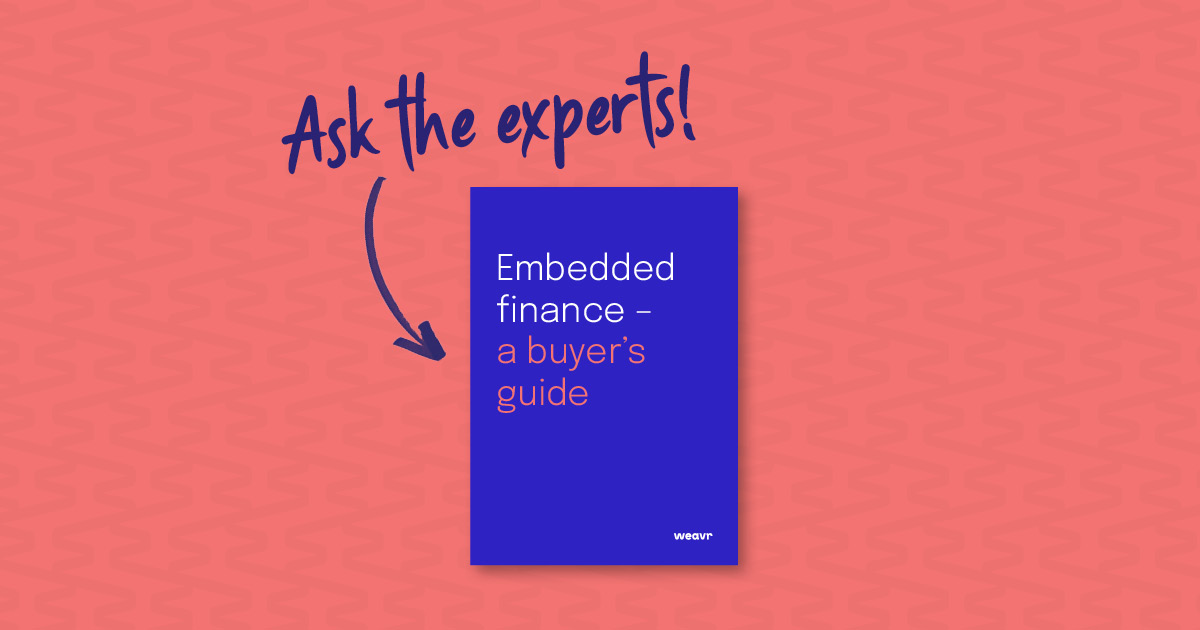Embedded finance is coming to productivity platforms. Are you ready?
When the first online auction sites launched in the 1990s, they were a world away from the quick and simple payments we know today. Users could bid for items online, but paying for them still meant mailing the seller a paper cheque. Completing a purchase took days or even weeks, and was fraught with chances for both the buyer and seller to lose their money.
Now that process sounds so antiquated that someone born after the millennium might not even believe it was the norm. Advances like digital payments, wallets and one-click checkouts have completely revolutionised the eCommerce space. Soon the same will happen for business productivity platforms – from project management, task tracking and to-do list tools to the ever-expanding world of workplace OS platforms.

Weaving financial services into business platforms might seem strange at first glance, but payments flow through a business every single day. In the future, workplace OS without internal payments is going to sound as out of date as completing an eBay purchase through the post.
It’s not a transformation that’s years down the road – the early adopters are at the foothills now, and the platforms that embrace embedded finance will have a powerful competitive advantage over the rest of the market.
The untapped desire for financial innovation
Every business is underpinned by moving money from A to B. Whether it’s ad hoc expenses and approvals, contractor invoices or marketing budgets, making and receiving payments is an unavoidable part of running a business.
But while teams can use productivity platforms to track what’s being spent, they still can’t make the final payment from there. Managers can log what they’re using from their budget, but still have to get approval from the one person holding the keys to the account. Back office teams can track invoices and expense receipts, but still have to switch windows and log into a bank account to complete the payment.
The time that takes might seem minimal on the surface, but no one appreciates spending their day following paper trails or chasing approval for every item. And that’s if the process goes well every time – costly reconciliation errors are bound to happen when there’s so much manual input along the way.
Embedded finance can join the dots between the platform and the payment, giving individual users the power to make payments without ever leaving the system. They just have to authorise the payout and put the time saved into more valuable tasks.
Plant your flag first and claim the mountain

Today, the productivity platform world is far more than a single market. It’s inhabited by dozens of platforms for everything from accounting and project ticketing to low-code process creation and file management. With specialised platforms targeting particular verticals, teams and job roles, they’re competing fiercely to become part of our daily working toolkit.
The more these systems become an integral part of the workflow, the more that will change. At the moment there’s a limit on that model – an accounting platform won’t spread any further through a company than the accounting team, for example. To break that barrier they’ll have to start overlapping with other services, and offer a one-stop solution for the entire company rather than just one department.
Naturally payments will become part of these new systems – especially as platforms for HR, benefits and payroll start adding more scope for task management by converging into this space. And wherever digital payments are involved, embedded finance needs to be part of the equation if you want your platform to be a true solution.
That’s because once users experience the seamless functionality of embedded finance, it’s going to be hard to get them interested in an alternative. There’s an opportunity to become essential to businesses and earn lifetime revenue in return, but it won’t hang around if you take too long to get to the starting line.
Incumbent or newcomer, you’ve got to be ready
How you approach this race will depend on where you already are in the market – on whether you’re an existing platform weighing up where you can make your next innovation, or a challenger looking to catch the incumbents napping.
The established players have the advantage of being able to land and expand. They might already have a foothold in a company as the marketing team’s project management software – from there, they can weave in embedded finance features to help the team effortlessly manage their advertising spend. Once they start shouting about how much time it saves them and how much easier it is to get on with their jobs, other teams will want to see what the platform can do for them as well.
By being in place in companies already, existing productivity platforms also have insight into exactly how their current customers use their software. They can see what will best elevate the user experience and make fewer assumptions.
Whether your offering is an application, marketplace or platform, embedded finance in productivity platforms is happening. If you’re looking to embed finance into your business, set up a meeting with one of our experts in your industry and request a chat today.




